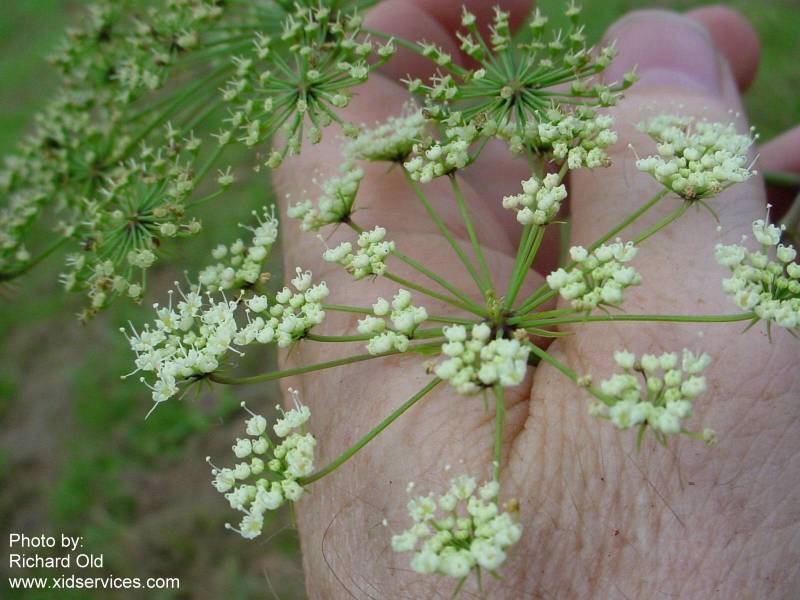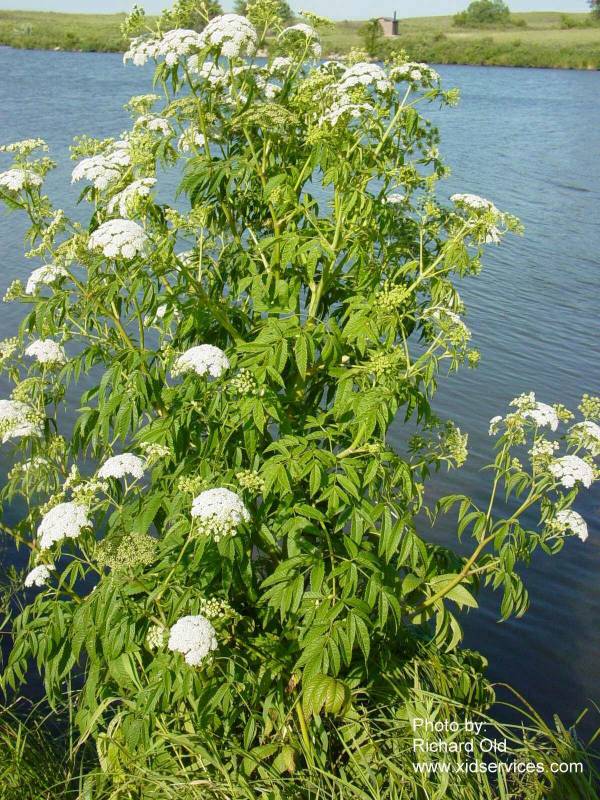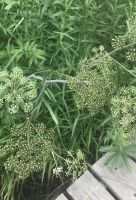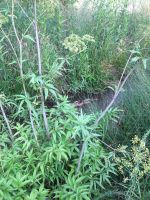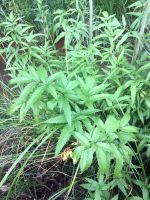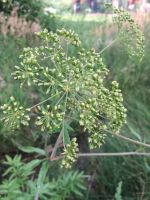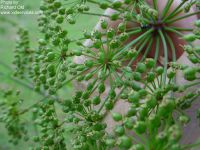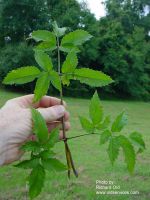Distribution: Occurring east of the Cascades crest in Washington; Alaska to California, east across North America to the Atlantic Coast.
Habitat: Marshes, ditches, and shorelines, from low to middle elevations in the mountains.
Flowers: June-August
Origin: Native
Growth Duration: Perennial
Conservation Status: Not of concern
Edibility: EXTREMELY TOXIC EVEN IN SMALL AMOUNTS WHEN INGESTED BY HUMANS AND LIVESTOCK.
Pollination: Generalist
Perennial herbs, 10--15 dm, stems usually purple spotted below; axillary bulbils absent.
1-2-ternate-pinnately compound; leaflets linear to ovate, often with dark, shiny petiolule, 14-104 x 2-39 mm, areoles on abaxial leaf surface usually rounded or square, margins serrate, abaxial surface glabrous.
Umbels, terminal and axillary, compound, flat topped, convex, or hemispheric; peripheral flowers not different; involucral bracts narrow, herbaceous, or absent; involucel bractlets present, rarely absent.
Hermaphroditic; sepals reduced; petals white.
Schizocarps, widely elliptic to circular, 2.3--4.1 x 1.6--3.4 mm, commissure unevenly or not constricted; dorsal corky thickened ribs equaling to narrower or slightly wider than oil ducts in intervals between ribs on mature fruits.
EXTREMELY TOXIC EVEN IN SMALL AMOUNTS WHEN INGESTED BY HUMANS AND LIVESTOCK.
Publication: Sp. Pl. 1: 256. 1753.
-
var. angustifolia – spotted water-hemlock
 Occurring east of the Cascades crest in Washington; Alaska to California, east to the Great Lakes region and eastern Canada.
Occurring east of the Cascades crest in Washington; Alaska to California, east to the Great Lakes region and eastern Canada.
PNW Herbaria: Specimen records of Cicuta maculata in the Consortium of Pacific Northwest Herbaria database
WA Flora Checklist: Cicuta maculata checklist entry
OregonFlora: Cicuta maculata information
E-Flora BC: Cicuta maculata atlas page
CalPhotos: Cicuta maculata photos

